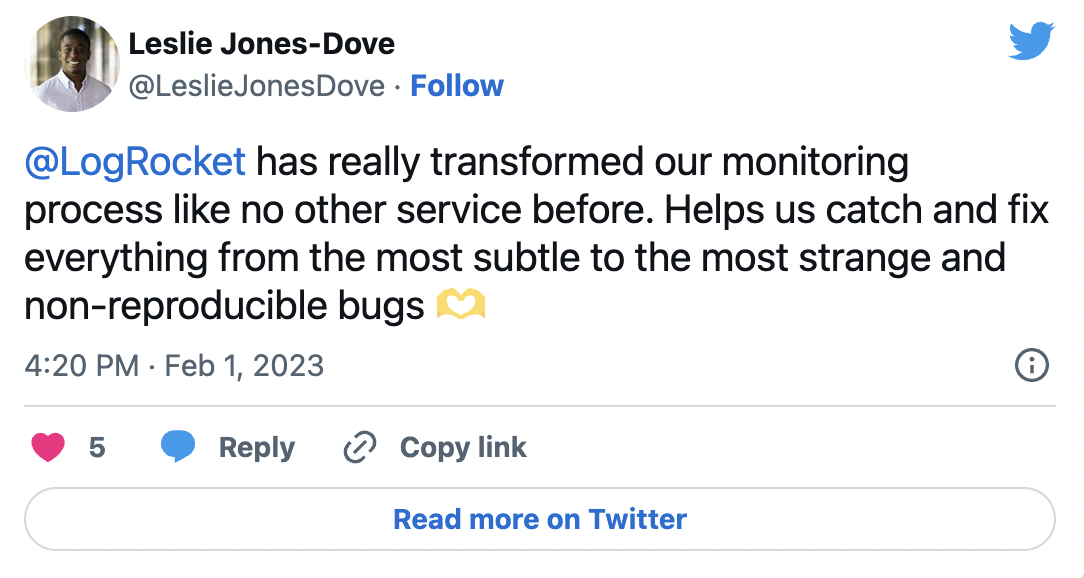

One of the issues all front-end developers face is how to make UI components reusable. How do we craft components in such a way that satisfies the narrow use case that is clear to us now, while also making them reusable enough to work in a variety of circumstances?
Let’s say we are building an autocomplete component:
class Autocomplete extends React.Component {
constructor(props) {
super(props)
this.state = {
results: props.options
}
}
searchList(event) {
const results = this.props.options
.filter(option => option.toLowerCase().includes(event.target.value.toLowerCase()))
this.setState({ results })
}
render () {
return (
<div className="autocomplete">
<input
type="text"
placeholder="Type to search list"
onChange={searchList}
/>
<div className="autocomplete-dropdown">
<ul className="autocomplete-search-results">
{this.state.results.map(option => (
<li class="autocomplete-search-result">{option}</li>
))}
</ul>
</div>
</div>
)
}
}
In this component, we have some logic that controls the core search behavior, but we also specify how the input and search results will be rendered. In this instance, we render a div that serves as a dropdown container and an unordered list containing a list item for each result within it.
Think about how you would reuse this component. Sure, you could use this very same component if you want to reproduce exactly the same behavioral and visual result. But what if you want to reuse the same behavior, but visualize the component slightly differently? What if you want to reuse the core search behavior but add a few modifications for a slightly different use case?
Imagine that instead of a dropdown containing the search results, you want a tag-like list of search results that always display:

At their core, the functionality of these two components is very similar: type into an input to filter a list.
This is a perfect use case for some relatively new tools that modern JavaScript frameworks now provide. These are render props in React and scoped slots in Vue. They work very similarly and provide a way to separate the behavior of a component from its presentation.

First, let’s look at how we would restructure our autocomplete component using render props in React. We will now have two components — one for our Autocomplete component and one for a core SearchSelect component.
Let’s look at the SearchSelect component first:
class SearchSelect extends React.Component {
constructor(props) {
super(props)
this.state = {
results: props.options
}
}
searchList(event) {
const results = this.props.filterMethod(this.props.options, event.target.value)
this.setState({ results })
}
render() {
return this.props.render({
results: this.state.results,
searchList: (event) => this.searchList(event)
})
}
}This is a renderless component (one that doesn’t render any markup of its own). Rather, it returns the result of a special prop called a render prop. This render prop accepts an object, into which you can pass any data that you would like the parent component to have access to.
Our SearchSelect component is handling the lowest level functionality — filtering a list of options based on a query string. It is then using the special render prop to render an element.
In the parent, we pass a function to the render prop of the SearchSelect component. This function returns a React element, which we can hydrate with state and behavior from the SearchSelect component itself. Basically, this means we are able to access data from the child component in the parent.
import SearchSelect from './search-select'
class Autocomplete extends React.Component {
constructor(props) {
super(props)
}
filterMethod (options, query) {
return options.filter(option => option.toLowerCase().includes(query.toLowerCase()))
}
render() {
return (
<SearchSelect
options={this.props.options}
filterMethod={this.filterMethod}
render={({results, searchList}) => (
<div>
<input
type="text"
placeholder="Type to search list"
onChange={searchList}
/>
<ul>
{results.map(option => (
<li>{option}</li>
))}
</ul>
</div>
)}
/>
)
}
}
The key to making this work is the arguments we pass to the render prop function. See how we are destructuring a single object and using those destructured properties inside our markup? This object should be passed as an argument when you call this.props.render() in the child component.
All this means that we can write whatever markup we want, as long as we properly hydrate it with the data and behavior exposed by the SearchSelect component.

The Replay is a weekly newsletter for dev and engineering leaders.
Delivered once a week, it's your curated guide to the most important conversations around frontend dev, emerging AI tools, and the state of modern software.
Also, note how we are passing the method for filtering our list in as a prop. This will allow us to change the way our list of options is filtered, while still using the SearchSelect component.
Let’s look at how we would implement our tag-like list component. We use the same SearchSelect core component and just change the markup rendered by the render prop:
import SearchSelect from './search-select'
class TagListSearch extends React.Component {
constructor(props) {
super(props)
}
filterMethod (options, query) {
return options.filter(option => option.toLowerCase().includes(query.toLowerCase()))
}
render() {
return (
<SearchSelect
options={this.props.options}
filterMethod={this.filterMethod}
render={({results, searchList}) => (
<div className="tag-list-search">
<input
type="text"
placeholder="Type to search list"
onChange={searchList}
/>
<ul className="tag-list">
{results.map(result => (
<li className="tag" key={result}>{result}</li>
))}
</ul>
</div>
)}
/>
)
}
}
Check out the working example:
See the Pen
Reusable React Search Select with Render Props by Jonathan Harrell (@jonathanharrell)
on CodePen.
Now let’s look at how we would implement this in Vue using scoped slots. First, here’s our SearchSelect component (for this example I am using globally registered components but you should probably use single file components in a real project):
Vue.component('search-select', {
props: [
'options',
'filterMethod'
],
data () {
return {
query: ''
}
},
computed: {
results () {
return this.filterMethod(this.options, this.query)
}
},
methods: {
setQuery (event) {
this.query = event.target.value
}
},
render () {
return this.$scopedSlots.default({
results: this.results,
searchList: (event) => {
this.setQuery(event)
}
})
}
})As you can see, this looks very similar to the render prop in our React component. Here, we are returning a default scoped slot, which passes along an object with whatever we want. Here, we give it the results and our search method.
In our Autocomplete component, we use the slot-scope attribute to get access to the data from the child component. We can destructure the properties that come through for easier access, in much the same way as in our React render prop argument:
Vue.component('autocomplete', {
data () {
return {
dropdownVisible: false
}
},
methods: {
filterMethod (options, query) {
return options.filter(option => option.toLowerCase().includes(query.toLowerCase()))
},
showDropdown () {
this.dropdownVisible = true
},
hideDropdown () {
this.dropdownVisible = false
}
},
template: `
<search-select
:options="options"
:filterMethod="filterMethod"
>
<div slot-scope="{ results, searchList }">
<div class="autocomplete">
<input
type="text"
placeholder="Type to search list"
@input="searchList"
@focus="showDropdown"
@blur="hideDropdown"
/>
<div class="autocomplete-dropdown" v-if="dropdownVisible">
<ul class="autocomplete-search-results-list">
<li
class="autocomplete-search-result"
v-for="result in results"
:key="result"
>
{{ result }}
</li>
</ul>
</div>
</div>
</div>
</search-select>
`
})
Check out the working example:
See the Pen
Reusable Vue Search Select with Scoped Slots by Jonathan Harrell (@jonathanharrell)
on CodePen.
Creating reusable interface components isn’t the only use for render props and scoped slots. Here are some other ideas for how you can use them to encapsulate reusable behavior in a component that can then be exposed to its parent.
Data provider components
You can use render props/scoped slots to create a component that handles asynchronously fetching data and exposing that data to its parent. This allows you to hide the logic for hitting an endpoint, getting the result and handling possible errors, as well as displaying a loading state to users while the data fetch is in progress.
Here’s what the base component could look like:
class FetchData extends React.Component {
constructor(props) {
super(props)
this.state = {
loading: false,
results: [],
error: false
}
}
componentDidMount() {
this.fetchData(this.props.url)
}
fetchData(url) {
this.setState({ loading: true })
fetch(url)
.then(data => data.json())
.then(json => {
this.setState({ loading: false, results: json })
})
.catch(error => {
this.setState({ loading: false, error: true })
})
}
render() {
return this.props.render({
loading: this.state.loading,
results: this.state.results,
error: this.state.error
})
}
}It accepts a URL as a prop and handles the actual fetching logic. Then, we use it in a parent component:
class App extends React.Component {
constructor(props) {
super(props)
}
render() {
return (
<div className="wrapper">
<FetchData
url="https://jsonplaceholder.typicode.com/todos"
render={({loading, results, error}) => (
<div>
{loading && (
<p>Loading...</p>
)}
{results.length > 0 && (
<div className="results">
{results.map(result => (
<p key={result.id}>{result.title}</p>
))}
</div>
)}
{error && (
<p>There was a problem loading.</p>
)}
</div>
)}
/>
</div>
)
}
}
Observers (resize, intersection, etc.)
You can also use render props/scoped slots to create a component that acts as a wrapper around resize or intersection observers. This component can simply expose the current size or intersection point of an element to a parent component. You can then perform whatever logic you need based on that data in the parent, preserving a nice separation of concerns.
Here is a base component that observes its own size and exposes its height and width to its parent:
class ObserveDimensions extends React.Component {
constructor(props) {
super(props)
this.state = {
width: null,
height: null
}
this.elementToObserve = React.createRef()
}
componentDidMount(nextProps) {
const erd = elementResizeDetectorMaker({ strategy: 'scroll' })
erd.listenTo(this.elementToObserve.current, element => {
this.setState({
width: element.offsetWidth,
height: element.offsetHeight
})
});
}
render() {
return (
{this.props.render({
width: this.state.width,
height: this.state.height
})}
)
}
}We are using the Element Resize Detector library to listen to changes in our element size, and a React ref to get a reference to the actual DOM node.
We can then use this component quite easily in our app:
class App extends React.Component {
constructor(props) {
super(props)
}
render() {
return (
<div className="wrapper">
<ObserveDimensions
render={({width, height}) => (
<div>
Width: {width}px
Height: {height}px
</div>
)}
/>
</div>
)
}
}
The key to successfully creating reusable components using both render props and scoped slots is being able to correctly separate behavior from presentation. Each time you create a new UI component, think “What is the core behavior of this component? Can I use this anywhere else?”
Having a core set of renderless components that use render props or scoped slots can help you cut down on code duplication in your app and think more carefully about your core interface behaviors.
Debugging Vue.js applications can be difficult, especially when users experience issues that are difficult to reproduce. If you’re interested in monitoring and tracking Vue mutations and actions for all of your users in production, try LogRocket.

LogRocket lets you replay user sessions, eliminating guesswork by showing exactly what users experienced. It captures console logs, errors, network requests, and pixel-perfect DOM recordings — compatible with all frameworks.
With Galileo AI, you can instantly identify and explain user struggles with automated monitoring of your entire product experience.
Modernize how you debug your Vue apps — start monitoring for free.
Install LogRocket via npm or script tag. LogRocket.init() must be called client-side, not
server-side
$ npm i --save logrocket
// Code:
import LogRocket from 'logrocket';
LogRocket.init('app/id');
// Add to your HTML:
<script src="https://cdn.lr-ingest.com/LogRocket.min.js"></script>
<script>window.LogRocket && window.LogRocket.init('app/id');</script>

Learn how ChatGPT’s new browser Atlas fits into a frontend developer’s toolkit, including the debugging and testing process.

Users don’t think in terms of frontend or backend; they just see features. This article explores why composition, not reactivity, is becoming the core organizing idea in modern UI architecture.

Discover what’s new in The Replay, LogRocket’s newsletter for dev and engineering leaders, in the November 19th issue.

Jack Herrington writes about how React 19.2 rebuilds async handling from the ground up with use(),
Hey there, want to help make our blog better?
Join LogRocket’s Content Advisory Board. You’ll help inform the type of content we create and get access to exclusive meetups, social accreditation, and swag.
Sign up now